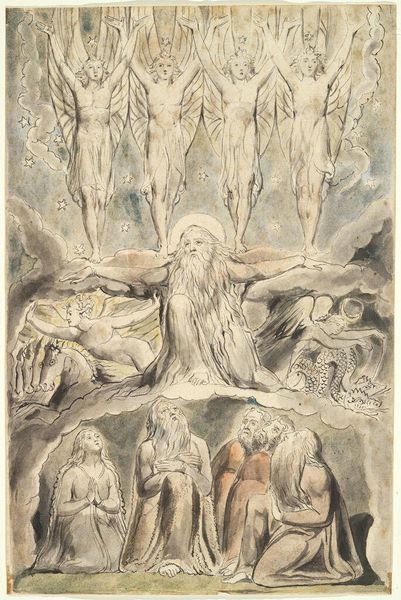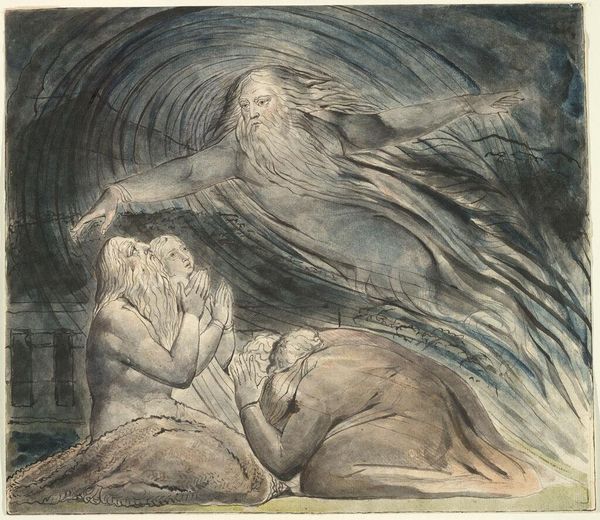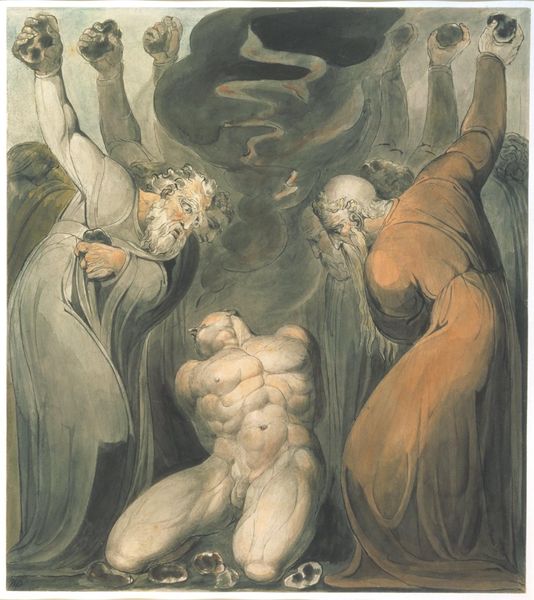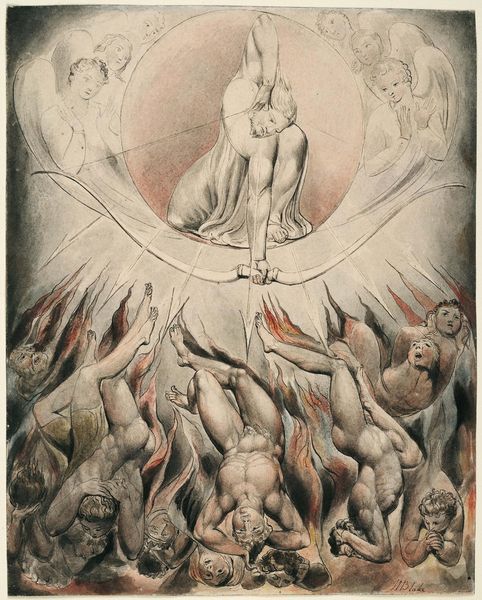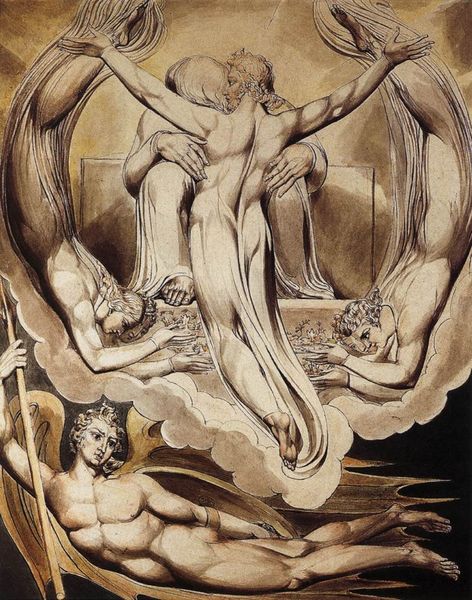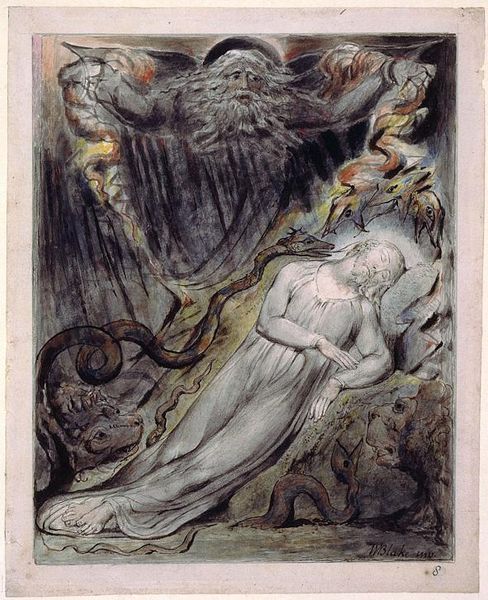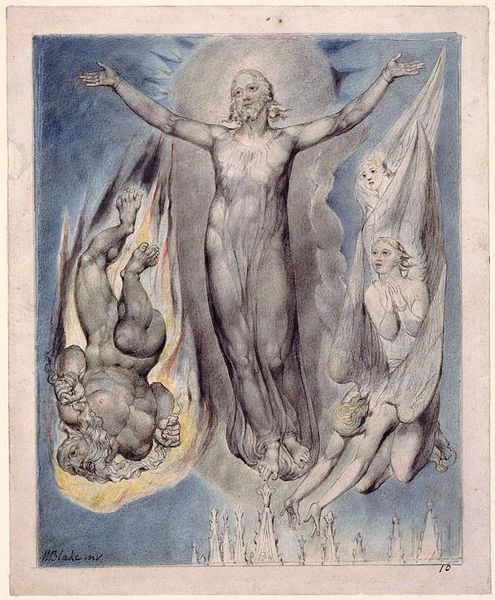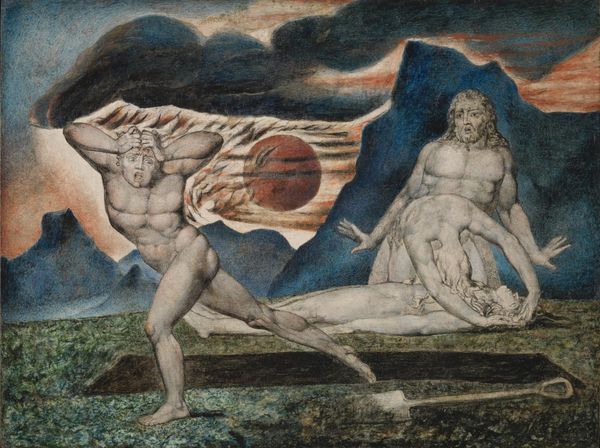
drawing, paper, ink
#
drawing
#
allegories
#
allegory
#
symbol
#
charcoal drawing
#
figuration
#
paper
#
ink
#
romanticism
#
surrealism
#
symbolism
#
history-painting
#
nude
Dimensions: 48.5 x 61 cm
Copyright: Public domain
Editor: So, this is William Blake's "The House of Death," made with ink and charcoal on paper. It's quite a somber scene, with several figures in various states of distress, overshadowed by a larger, almost spectral figure above. What historical context can illuminate this artwork for us? Curator: Blake was deeply critical of institutional power, and he infused his art with social commentary. Considering this piece, the looming figure, possibly representing a deity or some abstract concept of fate, seems to be controlling the narrative. How does this figure relate to the prone or kneeling individuals in the foreground? Editor: They appear subjugated, almost lifeless, as though trapped under this oppressive force. Is Blake commenting on societal structures of his time? Curator: Precisely. Blake’s romanticism frequently involved indictments against perceived injustices. This 'House of Death' evokes a space where individual agency is stifled. Think about the socio-political context of late 18th-century England—what powers exerted control over daily lives? The Church? The State? Perhaps both are visualized here. The bodies certainly tell a tale of suppression. What impact do you think the dramatic use of light and shadow contributes? Editor: The stark contrast emphasizes the darkness and the feeling of despair. The 'deity' is illuminated, further highlighting their power compared to those below. The composition almost feels like propaganda but perhaps for questioning authority? Curator: It subverts any endorsement of dominant power structures. Blake employs visual language not to celebrate authority but to question it. Notice how the figures are not idealized, not heroic, but vulnerable, and mortal. How does this deviate from typical historical painting? Editor: Right, this avoids glorifying any ruler or empire and portrays people facing overwhelming powerlessness instead. It seems much more empathetic. Curator: I think analyzing Blake's social and political positioning in Georgian England grants greater understanding of this rather dark and surreal composition. Seeing the 'House of Death' as a rejection of the status quo, and an expression of solidarity to the powerless really shifts the way I understand this drawing. Editor: Agreed! I appreciate seeing the rebellious side of Blake coming through so vividly now!
Comments
No comments
Be the first to comment and join the conversation on the ultimate creative platform.

